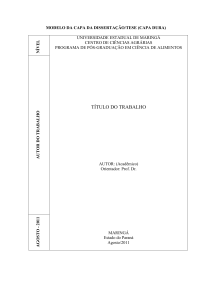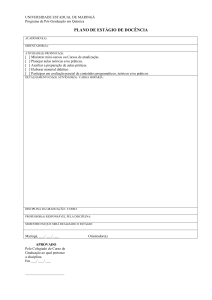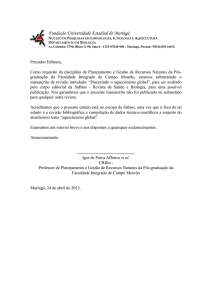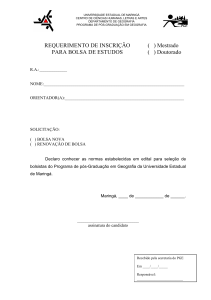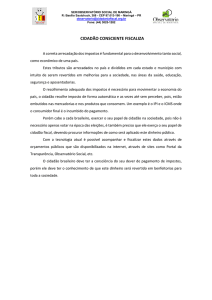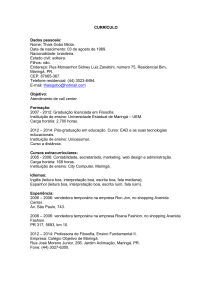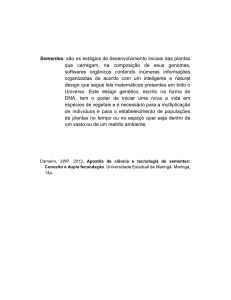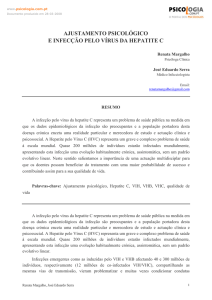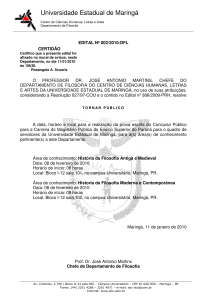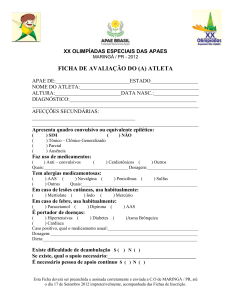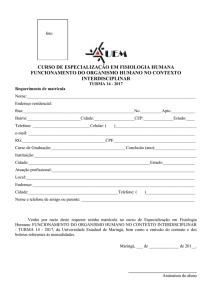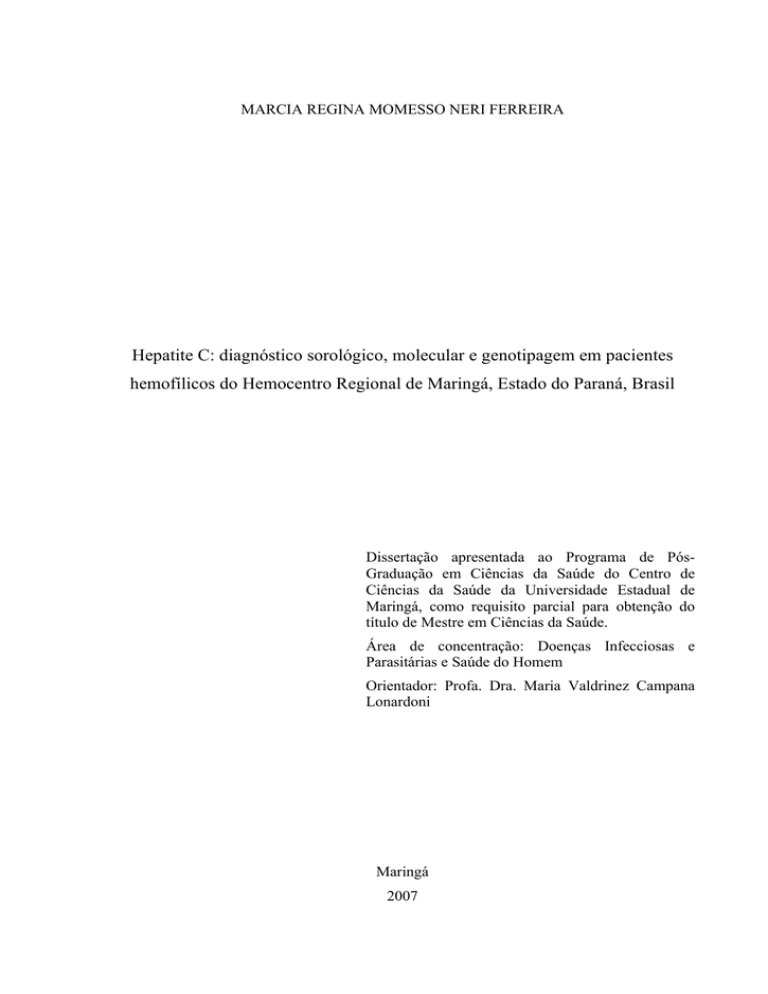
MARCIA REGINA MOMESSO NERI FERREIRA
Hepatite C: diagnóstico sorológico, molecular e genotipagem em pacientes
hemofílicos do Hemocentro Regional de Maringá, Estado do Paraná, Brasil
Dissertação apresentada ao Programa de PósGraduação em Ciências da Saúde do Centro de
Ciências da Saúde da Universidade Estadual de
Maringá, como requisito parcial para obtenção do
título de Mestre em Ciências da Saúde.
Área de concentração: Doenças Infecciosas e
Parasitárias e Saúde do Homem
Orientador: Profa. Dra. Maria Valdrinez Campana
Lonardoni
Maringá
2007
RESUMO
Antes do advento do processo de inativação viral desenvolvido na década de 1980, grande
parte dos pacientes hemofílicos que tinham recebido previamente grandes quantidades de
fatores de coagulação derivados de plasma foi infectado com o vírus da hepatite C.
Atualmente, a doença hepática causada pelo VHC se tornou uma das principais causas de
morbidade em pacientes hemofílicos. Deste modo, o objetivo deste estudo foi avaliar a
prevalência da infecção pelo vírus da hepatite C em pacientes hemofílicos cadastrados no
Hemocentro Regional de Maringá, no Estado do Paraná, Brasil, através do levantamento de
dados sócio-epidemiológicos e realização de testes sorológicos e moleculares, verificando
possível associação com o tipo e a gravidade de hemofilia, a presença de inibidor anti-fator
VIII ou IX, o tipo de tratamento, data de início de tratamento e taxas das enzimas hepáticas
Alanina Aminotransferase (ALT) e Aspartato Aminotransferase (AST). Foram estudados 69
pacientes hemofílicos, sendo 82,6% portadores de hemofilia A e 17,4% de hemofilia B, com
idade entre 1 e 67 anos e mediana de 22 anos. O anti-VHC foi investigado por teste
imunoenzimático de terceira geração e confirmado pelo RNA-VHC. Os genótipos foram
determinados pela técnica LIPA. A prevalência de infecção pelo VHC nos pacientes
hemofílicos cadastrados no Hemocentro Regional de Maringá foi de 37,7% e de 21,7%
considerando-se a presença do anticorpo anti-VHC e a detecção do RNA-VHC,
respectivamente e associada significativamente (p<0,05) com o tipo de tratamento, data de
início de tratamento e taxas das enzimas hepáticas ALT e AST. O genótipo 1 do VHC
(53,3%) foi o mais prevalente, seguido pelos genótipos 3 (40,0%) e 2 (6,7%). Nossos
resultados indicam que a prevalência do VHC é ainda alta entre os hemofílicos, muito embora
a infecção não tenha sido observada entre os menores de 17 anos.
Palavras-chave: Vírus da hepatite C, Hepatite C, Hemofilia, Prevalência, Genótipos.
ABSTRACT
Before the advent of the viral inactivation process developed in the 1980´s, most of the
hemophilic patients that had previously received great quantities of coagulation factors
derived from plasma was infected with the Hepatitis C Virus. Nowadays, the hepatic disease
caused by HCV has become one of the most important causes of morbidity in hemophilic
patients. In this sense, the objective of this study was to analyze the predominance of the
Hepatitis C Virus infection in hemophilic patients registered in the Regional Hemocenter of
Maringa in Parana State, Brazil, through a social-epidemiological survey and also through
serological and molecular tests, which were used to verify the possible relation between the
type and the hemophilia severity, the presence of the inhibiting anti-factor VIII or IX, the
treatment type, the treatment starting date and the hepatic enzymes’ levels of Alanine
Aminotransferase (ALT) and Aspartate Aminotransferase (AST). Sixty-nine hemophilic
patients were studied, being 82.6% carriers of hemophilia type A and 17.4% carriers of
hemophilia type B, aged between 1 and 67 years and median age of 22 years. The anti-HCV
was investigated through an immunoenzymatic test of third generation and confirmed by the
HCV-RNA. The genotypes were determined by the LIPA technique. The prevalence of HCV
infection in the hemophilic patients registered in the Regional Hemocenter of Maringa
corresponded to 37.7% and to 21.7% considering the presence of the antibody anti-HCV and
the HCV-RNA detection, respectively, and significantly associated (p<0.05) with the
treatment type, with the initial treatment date and to ALT and AST hepatic enzymes’ levels.
The genotype 1 of HCV (53.3%) was the most predominate, followed by the genotypes 3
(40.0%) and 2 (6.7%). The results point out that the predominance of the HCV is still high
among hemophiliacs, although infections were not observed among patients under 17 yearsold.
Key-words: Hepatitis C vírus, Hepatitis C, Hemophilia, Predominance, Genotypes

